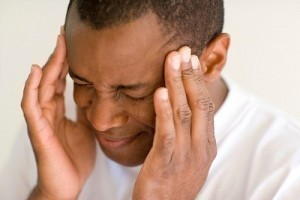Symptoms for Headaches
Headache refers to the pain affecting different parts of the head. It comes in varying levels and is usually associated with symptoms like nausea, stiff neck or dizziness. More often than not, a dull, sharp and throbbing pain characterizes this medical condition. It is classified into primary and secondary headaches. Here is a quick look at the different major and minor symptoms for headaches, as well as the proper diagnosis and possible treatments for this painful medical condition.
Signs of Headaches
Tension-type headaches and migraine are two of the most common primary headaches. On the other hand, secondary headaches are usually caused by different factors including overuse of pain medication, carbon monoxide poisoning and brain aneurysm. When the pain is caused by migraine, early signs include tingling sensation in the arms, blind spots or flashes of light. Furthermore, individuals suffering from this condition are guaranteed to experience extreme sensitivity to light, vomiting and nausea. In case of cluster headache, patients suffer from bouts of frequent attacks.
For those who are suffering from tension-type headache, the major and minor signs include occasional loss of appetite, pressure across the forehead as well as tenderness on the shoulder and neck area. Meanwhile, individuals who have a case of hemicrania continua experience drooping of the eyelid, nasal congestion and pain on one side of the head.
Headache Diagnosis
When diagnosing migraine, medical experts use different types of methods. However, they always start with the medical histories of their patients. Thereafter, patients usually undergo physical examinations. In order to understand the condition further, they can also go through other diagnostic tests including lumbar puncture, magnetic resonance imaging and computerized tomography. For tension-type aches, health professionals use x-rays, magnetic resonance imaging scans and computerized tomography. They will also make use of the so-called headache calendar in order to monitor the pain more closely.
Headache Treatment
When people have migraine, doctors commonly prescribe preventive medications and pain relievers. Non-steroidal anti-inflammatory drugs are the most common, which may include the use of aspirin, acetaminophen and caffeine. The use of triptans is also good for individuals suffering from migraine. Possible choices include eletriptan, zolmitriptan and sumatriptan. Opiates, butalbital combinations and anti-nausea medications can also help fight the symptoms of migraine.
For tension-type aches, physicians usually recommend their patients to use leading analgesics such as ketorolac, indomethacin and naproxen sodium. Moreover, the use of opiates and triptans can also ease the suffering of patients. For cluster headache, leading treatments include local anesthetics, octreotide and dihydroergotamine.
For more information on Symptoms For Headaches read:





